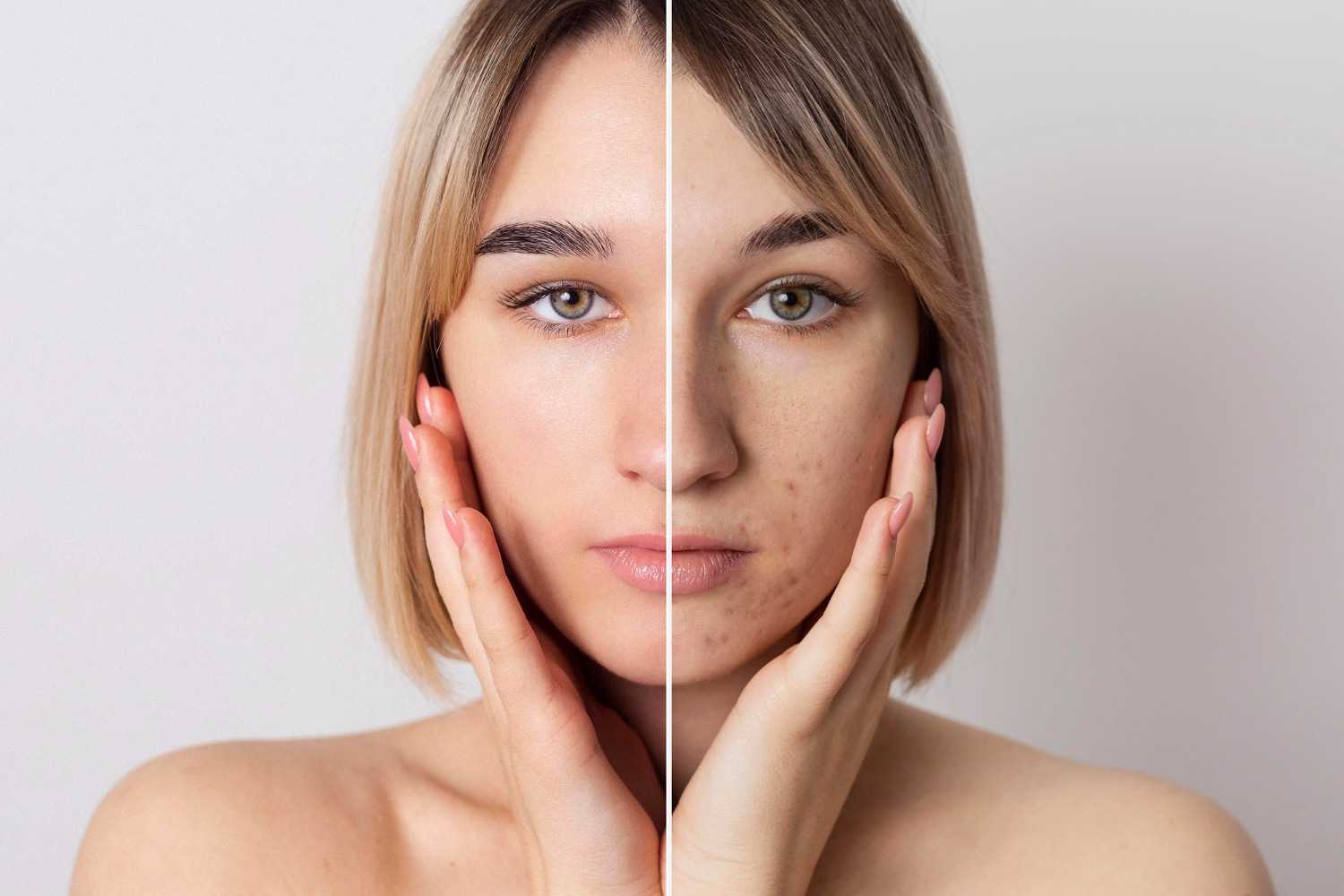
Latisse Hypopigmentation – Scar and Pigment Treatment
David Fuller
Last Updated On: June 22, 2024
Studies show that approximately 1% of the global population suffers from hypopigmentation, a condition in which patches of skin become lighter than the surrounding area. This skin discoloration can significantly impact a person’s confidence and overall well-being, so finding effective treatments is crucial for those affected.
Latisse, widely known for its eyelash growth properties, has garnered attention for its potential benefits in treating hypopigmentation. With the prevalence of hypopigmentation, it’s essential to understand how products like Latisse can manage skin pigment issues.
In this article, we will explore the use of Latisse for hypopigmentation treatment while also reviewing its effectiveness, expert opinions, and guidelines to help you choose Latisse for scar and pigment treatment.
Key Takeaways
- Latisse (bimatoprost) has shown potential in promoting repigmentation in hypopigmented scar tissue.
- The off-label use of Latisse in scar treatment is an emerging therapeutic application with promising results.
- Medical professionals should consider Latisse as a viable option for patients with challenging hypopigmented scars.
About: Operating since 2016, Med Supply Solutions is known for being one of the industry’s top and trusted suppliers of cosmetic and viscosupplementation products. If you’re looking to buy Latisse online, contact our sales department for more information.
Understanding Latisse (Bimatoprost)
Latisse contains bimatoprost, a compound that influences hair growth. Doctors often prescribe it to lengthen eyelashes and explore its dermatology uses. Bimatoprost, the active ingredient in Latisse, plays a crucial role as a prostaglandin analog, effectively targeting the growth phase of hair follicles.
When applied as an eyelash serum, this extension results in longer and significantly thicker eyelashes. In addition to its approved use for enhancing eyelash growth, bimatoprost’s action has been explored for treating hypopigmentation in scars. Latisse, known as bimatoprost, is the first FDA-approved treatment to enhance eyelash growth for individuals with sparse or inadequate lashes.
Off-label Uses in Dermatology
Latisse’s off-label use in dermatology shows promise, especially in treating hypopigmented scars resistant to conventional therapies. Its active ingredient, Bimatoprost, has demonstrated efficacy in restoring pigment to challenging scars.
Combining Latisse with fractional laser therapy enhances melanogenesis, yielding significant improvements in scar pigmentation and texture. This innovative approach marks an exciting advancement in dermatological care.
Latisse’s Potential in Scar Treatment
Latisse holds promise in addressing hypopigmented scars, a persistent challenge for many patients. Its capacity to stimulate melanogenesis presents an innovative approach to scar repigmentation therapies.
Unlike hyperpigmentation, where excess melanin darkens an area, hypopigmentation results from reduced melanin production, making scars lighter and more noticeable. Efforts to re-pigment these areas often involve combining Latisse with fractional laser therapy.
Bimatoprost, Latisse’s active ingredient, promotes melanogenesis within hypopigmented sites. This integration highlights an innovative approach to minimizing the visual impact of scars.
Understanding how Latisse enhances melanogenesis offers insights into potential treatments for scar-related discoloration, potentially improving repigmentation outcomes. Exploring Latisse’s role in activating this pigmentation process can pave the way for novel approaches to effectively managing and treating scar hypopigmentation.
How Latisse Stimulates Melanogenesis
Latisse, or bimatoprost, stimulates melanogenesis by mimicking prostaglandin effects on pigment production and hair growth cycles. Specifically targeting melanocytes within hypopigmented scars, Latisse activates melanin production, restoring natural skin color.
Applied topically, bimatoprost increases melanocyte activity, leading to more melanin production. Over time, with regular use and possibly combined with fractional laser therapy, patients observe pigmentation returning to faded scars, blending them with surrounding skin tone.
Clinical Evidence and Case Studies
Clinical evidence and case studies reveal Latisse’s effectiveness in re-pigmenting scars, showcasing promising results for patients. These studies highlight the effectiveness of combining Latisse treatments with fractional laser therapy to improve scar coloration.

Erin Smith, a board-certified facial Plastic Surgeon, mentioned that a possible side effect of the medication could be discoloration of the surrounding skin. She added that this should improve over time but recommended discussing it with the treating provider.

According to Anna Chacon, a board-certified dermatologist, Latisse (bimatoprost) is FDA-approved for eyelash growth, not hypopigmented skin repigmentation. Microneedling, which stimulates collagen for smoother skin, is mainly for scars and wrinkles and is not typically combined with Latisse for repigmentation.
Results vary per person and require multiple treatments and maintenance. It’s vital to consult healthcare providers for tailored advice, considering risks and benefits. For specific guidance, a dermatologist or appropriate healthcare provider should be consulted.
Safety and Precautions
Latisse, known scientifically as bimatoprost, shows promise in treating hypopigmented scars. However, potential side effects must be considered if someone is planning on using Latisse during pregnancy and in scar treatment.
- Eye Irritation: Redness or itchiness if Latisse contacts eyes during application.
- Skin Darkening: Treated skin may darken due to increased melanin production.
- Unwanted Hair Growth: Latisse may stimulate hair growth in unintended areas.
- Orbital Fat Loss: Long-term use might decrease orbital fat, affecting eye appearance.
- Eyelid Skin Discoloration: Prolonged use linked with eyelid skin discoloration.
- Dry Eyes: Some patients report increased dry eye symptoms after starting Latisse.
- Allergic Reactions: Risk of swelling, redness, or discomfort at the application site.
- Pigmentation Changes of The Iris: Rare changes in iris pigmentation were observed.
- Pregnancy Concerns: Insufficient data on Latisse’s safety during pregnancy.
Precautions for Safe Application
Ensuring the safe application of Latisse for treating scars requires careful attention to detail and adherence to specific guidelines. Medical professionals must carefully select and monitor patients closely to avoid adverse effects.
- To prevent allergic reactions, verify the patient’s history for any known sensitivity or allergy to bimatoprost, the active ingredient in Latisse.
- Conduct a thorough assessment of the patient’s scar condition and overall skin health before starting treatment to ensure suitability for Latisse application.
- Discuss potential side effects with patients, including Latisse’s long-term side effects and the risk of orbital fat loss, to ensure they are fully informed.
- Advise patients on the importance of applying Latisse only to the target area and avoiding areas where dark hair growth is undesirable.
- Instruct patients to apply Latisse using sterile applicators; using a new applicator for each dose minimizes the risk of infection.
- Monitor patients for signs of eye irritation or infection, discontinuing treatment if these occur as they may indicate improper application techniques or an adverse reaction.
- Advise pregnant women against using Latisse due to insufficient research on its safety during pregnancy, prioritizing fetal health.
- Educate patients about the correct dosage and frequency of application to prevent overuse, which could exacerbate side effects.
- Recommend routine follow-up appointments to assess the scar’s repigmentation progress and promptly manage any emerging side effects.
- Warn patients about potential changes in eyelid skin color or iris pigmentation, ensuring they understand that some side effects might be permanent.
Patient Selection and Contraindications
The right patients for Latisse treatment must be carefully selected, especially for treating hypopigmented scars. Caution is advised for patients with a history of orbital fat loss due to potential exacerbation by Latisse’s active ingredient, bimatoprost.
Contraindications include pregnancy, long-term side effects from previous treatments, and specific sensitivities to Latisse components. Dosage and application require healthcare professional supervision.
Conclusion
Latisse combines eyelash enhancement with scar repigmentation potential, offering hope for challenging skin discolorations. Careful application and consultation ensure safety and effectiveness, advancing aesthetic improvements and scar treatment technologies in this promising field. Integrating Latisse into dermatological practice marks a significant step forward in addressing hypopigmentation.
FAQs
1. What is Latisse’s mechanism of action?
Latisse is a medication containing an active ingredient that promotes eyelash growth, resulting in longer, thicker, and darker lashes.
2. Are there potential long-term adverse effects associated with Latisse?
Yes, some users may experience orbital fat loss, which can lead to changes in eye appearance, as a long-term side effect of Latisse.
3. Is Latisse considered safe for use during pregnancy?
It’s advisable to consult a physician before using Latisse during pregnancy, as its safety profile for pregnant individuals hasn’t been conclusively established.
4. Can Latisse effectively treat hypopigmentation scars?
While Latisse is primarily indicated for eyelash growth, evidence supporting its direct efficacy in treating hypopigmentation scars or altering skin pigmentation remains limited.
References
Vitiligo Overview: Types, Causes, Symptoms, and Treatment | Pfizer. www.pfizer.com. https://www.pfizer.com/disease-and-conditions/vitiligo#:~:text=Vitiligo%20Prevalence
Products
Cart
Log In
Newsletter
Subscribe for exclusive offers and updates on new arrivals
Share feedback at:
Working Hours
MON - SUN 9AM to 6PM EST
The Most Popular Brands
Med Supply Solutions
Support
Secure checkout is guaranteed with full adherence to PCI DSS payment standards.
Products listed here are guaranteed authentic and manufacturer-sourced.
Copyright 2025. Med Supply Solutions
Pay easily with trusted providers

